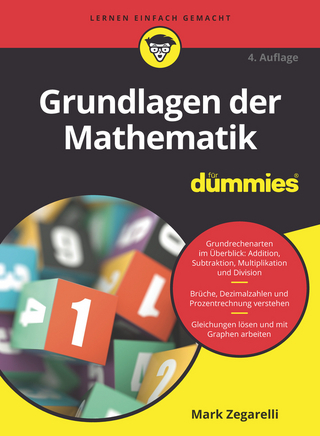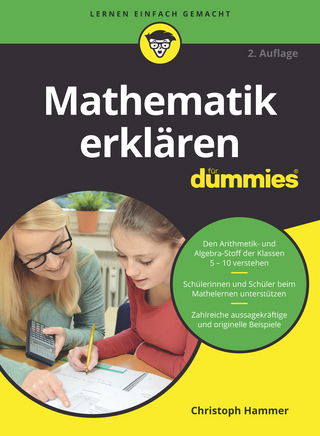
From Discrete to Continuous
The Broadening of Number Concepts in Early Modern England
Seiten
2002
Springer-Verlag New York Inc.
978-1-4020-0565-7 (ISBN)
Springer-Verlag New York Inc.
978-1-4020-0565-7 (ISBN)
Explores how the development of algebraic symbolism, logarithms, and the practical demands for an expanded number concept all contributed to a broadening of the number concept in early modern England.
In the early modern period, a crucial transformation occurred in the classical conception of number and magnitude. Traditionally, numbers were merely collections of discrete units that measured some multiple. Magnitude, on the other hand, was usually described as being continuous, or being divisible into parts that are infinitely divisible. This traditional idea of discrete number versus continuous magnitude was challenged in the early modern period in several ways.
This detailed study explores how the development of algebraic symbolism, logarithms, and the growing practical demands for an expanded number concept all contributed to a broadening of the number concept in early modern England. An interest in solving practical problems was not, in itself, enough to cause a generalisation of the number concept. It was the combined impact of novel practical applications together with the concomitant development of such mathematical advances as algebraic notation and logarithms that produced a broadened number concept.
In the early modern period, a crucial transformation occurred in the classical conception of number and magnitude. Traditionally, numbers were merely collections of discrete units that measured some multiple. Magnitude, on the other hand, was usually described as being continuous, or being divisible into parts that are infinitely divisible. This traditional idea of discrete number versus continuous magnitude was challenged in the early modern period in several ways.
This detailed study explores how the development of algebraic symbolism, logarithms, and the growing practical demands for an expanded number concept all contributed to a broadening of the number concept in early modern England. An interest in solving practical problems was not, in itself, enough to cause a generalisation of the number concept. It was the combined impact of novel practical applications together with the concomitant development of such mathematical advances as algebraic notation and logarithms that produced a broadened number concept.
1: Transformation of the Number Concept.- 2: The Ancient Sources.- 3: The Contemporary Influences.- 4: Early Modern English Algebra.- 5: The Development of the Logarithms: Napier and Briggs.- 6: Isaac Barrow.- 7: John Wallis.- 8: Conclusion.- References.- Indices.
| Reihe/Serie | Studies in History and Philosophy of Science ; 16 |
|---|---|
| Zusatzinfo | IX, 175 p. |
| Verlagsort | New York, NY |
| Sprache | englisch |
| Maße | 156 x 234 mm |
| Themenwelt | Geisteswissenschaften ► Geschichte |
| Mathematik / Informatik ► Mathematik ► Allgemeines / Lexika | |
| Mathematik / Informatik ► Mathematik ► Geschichte der Mathematik | |
| Sozialwissenschaften | |
| ISBN-10 | 1-4020-0565-2 / 1402005652 |
| ISBN-13 | 978-1-4020-0565-7 / 9781402005657 |
| Zustand | Neuware |
| Haben Sie eine Frage zum Produkt? |
Mehr entdecken
aus dem Bereich
aus dem Bereich


